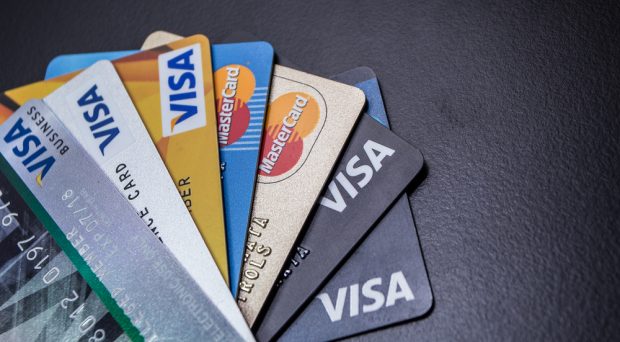 Opinions about the future of payments run in a million different directions. But amid the chaos and cacophony of studies, surveys and data, there is one common refrain: Debit and credit card programs are no longer just handy revenue streams for credit unions; they're becoming the primary connections credit unions have with many of their members.
Opinions about the future of payments run in a million different directions. But amid the chaos and cacophony of studies, surveys and data, there is one common refrain: Debit and credit card programs are no longer just handy revenue streams for credit unions; they're becoming the primary connections credit unions have with many of their members.
Credit union industry players such as CO-OP Financial Services already sense this fundamental shift, and it's changing how they think about strategically managing card programs. In a recent whitepaper and in an interview with President/CEO Todd Clark, the Rancho Cucamonga, Calif.-based company highlighted five ideas credit unions can use now to boost their debit and credit programs in the coming year.
1. Prioritize Digital Card Use
Shifting shopping habits have suggested that in 2020, persuading members to connect a particular card to an online shopping account, retailer app or bill payment system may be far more important than persuading them to keep a particular physical card within arm's reach. Analytical services firm Juniper Research, for example, recently forecasted that consumer spending via digital wallets will rise by a whopping 40% in 2019, largely driven by in-store payments. What's more, traditional financial institutions may lose as much as 15% of their payments revenue – $280 billion – over the next six years to fintech competitors, free payments and third-party mobile wallets if they don't keep up, according to an Accenture survey of 240 payments executives at banks in 22 countries.
Recommended For You
"There's an enormous shift from card-in-hand retail to online purchases. Investing to get your card in the card-not-present, the monthly bills, the recurring billings, the Amazons, the Ubers and the Netflix of the world is a big place that our smart-growth team focuses on," Clark told CU Times.
Credit unions can also boost their card programs by providing card-related digital services, CO-OP's recent whitepaper noted. Three products are particularly attractive among millennials right now: Mobile deposits, P2P payments and digital wallets, it noted.
"Perhaps the most valuable tool a credit union can offer millennials and other cardholders is an app for card controls and alerts," CO-OP stated. "These apps enable two-way communication between the cardholder and credit union and allow cardholders to take control of exactly how their cards can be used, down to the geographic location, merchant or merchant type, time of day, channel and proximity to the member cardholder's smartphone."
2. Stop Thinking of Debit and Credit Programs Separately
Debit cards and credit cards may be different animals in several regards, but strategically they can be more similar than different. Sharing platforms and applications can streamline things, Clark noted. "Credit unions are more often than not taking all of the card programs underneath a single umbrella," he said.
Even internally, CO-OP has melded its debit and credit worlds into a new kind of ecosystem, he said.
"We no longer call our products Credit and Debit and Contact Center. We break them up into units, like Pay, Engage, Protect, Consult and Integrate; those are how the credit union vendor members do business with us. Under the Pay product or the Protect product, there'll be a variety of different solutions and technology stacks, but they will all be integrated together," Clark explained.
3. Get Schooled on Machine Learning and Data Analytics
Algorithms and predictive statistical modeling are changing the way many industries interact with and market to consumers. The tools are also helping predict consumer behavior, which can bolster credit union card programs.
"Machine learning will ultimately be the thing that is used to combat fraud," Clark said.
"Most of those [machine learning applications] right now are fraud and fraud focused, but there's also the predictive side of machine learning that will allow you to predict what type of products and services your member might be needing in the near future. When you look at the vast data that we gather every year, without even adding to our system, that can tell you an enormous amount about your member across a broad range of products," he added.
Member location data is another example of information that can help card programs thrive in 2020.
"If you are reaching out to our contact center from your mobile number, and we know it's you because you typically have your phone in your hand and we can put your card near you by looking at our card transactions from the last 24 hours, we can say, 'OK, they're calling from this city and they used a card in the city yesterday,'" Clark explained. "Then potentially, maybe we can geo-fence you into a particular area and say, OK, they are who we think they are."
4. Invest in Personalization Programs
Credit unions should be sure they have programs that allow people to customize their card products, especially if they're pursuing new, younger members.
"Millennials want to put their stamp on a credit card; they value quirky card designs, customizable communication preferences and the ability to select alerts for the information they deem most important," CO-OP said in its whitepaper.
"Offer a first-credit-card program with a special rate for members looking to take the leap. Consider also a secured card program whereby the cardholder account is backed by a required security deposit. And construct a rewards offering that appeals to younger cardholders – in addition to cash back, offer incentives from the local merchants they frequent – and offer them the option to donate points as well to the charity of their choice," CO-OP added.
5. Launch a Financial Education Program
Credit unions generally charge lower fees than banks do, which creates an opportunity for them to woo cost-conscious consumers. However, many people may need more than low fees in order to feel good about where they get their debit and credit cards and how they use those products.
"Consider offering financial literacy courses that teach younger credit cardholders the basics of budgeting, the importance of paying on time and other strategies to enhance their credit worthiness," CO-OP wrote. "Don't overlook cross-selling opportunities, either. Millennials may be prime candidates for auto loans, home loans, and other products and services that will enrich their lives while deepening their relationship with the credit union."
Millennials especially want their financial institutions to provide advice, and they don't want that advice to come out of a can. They expect it to account for their asset level, age and life stage, and they want it delivered across various channels.
"The more personalized the guidance is, the more you will hold their attention and gain their trust," the company said.
© Touchpoint Markets, All Rights Reserved. Request academic re-use from www.copyright.com. All other uses, submit a request to [email protected]. For more inforrmation visit Asset & Logo Licensing.






